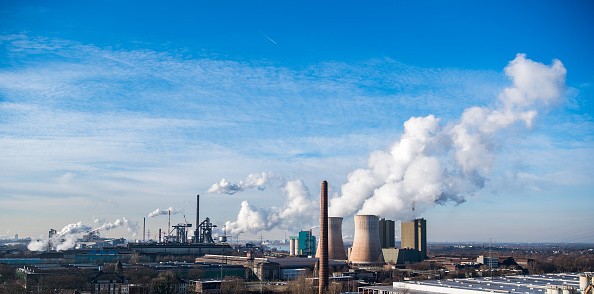Researchers have discovered that the Southern Ocean takes in more carbon from the atmosphere than it discharges, demonstrating that it is a significant carbon sink and an essential buffer against the impacts of human-caused greenhouse gas emissions.

How Much Atmospheric CO2 Does Southern Ocean Absorb?
The waters around Antarctica absorb more carbon from the atmosphere than they emit, making them serve as a powerful carbon sink, as well as a crucial buffer for greenhouse gas emissions, according to Scitech Daily.
Previous studies and models have left researchers unsure of how much atmospheric carbon dioxide (CO2) is absorbed by the frigid seas around the Antarctic continent.
Carbon dioxide emissions into the ocean south of 45°S are far larger than previously thought, according to research based on airplane sightings, which found that summer intake is higher than previously thought and winter outgassing is less than other recent studies have shown.
This area absorbed around 0.53 petagrams (530 million metric tons) of carbon every year more than it emitted, according to the researchers. They found that the waters in the region absorbed roughly 0.53 more petagrams (530 million metric tons) of carbon than they released each year.
The worldwide ocean absorbed and exhaled carbon dioxide in 2012, as seen in the animation and still images on this page. Focus on the Southern Hemisphere at 1:00.
The ECCO-Darwin Global Ocean Biogeochemistry Model provided the data. Federal agencies such as NASA and NOAA provided funding for this study. NASA and NOAA jointly supported the study.
Southern Ocean as an Important Carbon Sink on Earth
CO2 emitted by human activity is absorbed by ocean water and may delay the buildup of carbon dioxide in the atmosphere and the rise in global temperatures that comes with it.
This is in part owing to the deep ocean's upwelling of chilly water. Cold, nutrient-rich water rises to the surface, where phytoplankton help it absorb CO2 from the atmosphere before sinking back down.
The Southern Ocean is one of the most important carbon sinks on the planet, according to computer models that estimate that 40% of the CO2 absorbed from the atmosphere by the ocean comes from the Southern Ocean.
However, determining the amount of CO2 that is being exchanged from the atmosphere to the ocean has been difficult.

Measurement of Changes in CO2 Concentration
Ocean acidity, which rises as seawater absorbs CO2, has been measured by floating and drifting instruments in many previous studies of the Southern Ocean carbon flux. In a new study, researchers used aircrafts to monitor changes in CO2 concentrations above the ocean.
"You can't fool the atmosphere," Long said. "While measurements taken from the ocean surface and from land are important, they are too sparse to provide a reliable picture of air-sea carbon flux. The atmosphere, however, can integrate fluxes over large expanses."
Researchers employed aircraft observations from ATom, HIPPO, and ORCAS in the current study. A series of photographs (or profiles) showing the vertical change in CO2 concentration across different heights of the atmosphere and different seasons were taken by the field tests.
The ORCAS program, for example, saw a decrease in CO2 concentrations as the aircraft dropped and also identified strong turbulence at the ocean surface, which indicated an interchange of gases. They were able to get a better handle on carbon fluxes thanks to data from these profiles and other atmospheric models.
For more news, updates about greenhouse gas emissions and similar topics don't forget to follow Nature World News!
© 2025 NatureWorldNews.com All rights reserved. Do not reproduce without permission.





